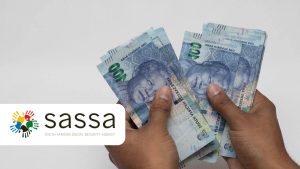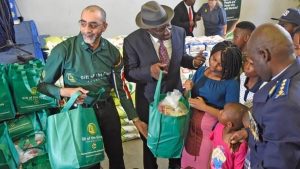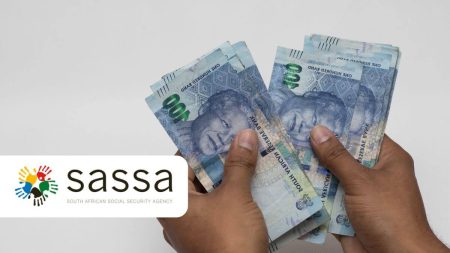Many South Africans rely on the Social Relief of Distress (SRD) R370 grant to cover basic living costs. As the 2025 reapplication period begins, thousands are rushing to submit their details to the South African Social Security Agency (SASSA). Unfortunately, many applications are declined or delayed, not because applicants are ineligible, but due to small errors like outdated banking information, mismatched personal details, or missed status checks.
Reapplying for the SRD grant does not need to be stressful. By following a clear checklist before you resubmit your application, you can avoid repeat rejections and increase your chances of fast approval. Below is a step-by-step guide on how to prepare your reapplication properly, ensuring that you continue receiving your SRD grant without unnecessary delays.
5 Steps to Get Approved Faster
Below is a step-by-step guide on how to prepare your reapplication properly, ensuring that you continue receiving your SRD grant without unnecessary delays.
1. Personal Information Accuracy
One of the most common reasons for rejection is incorrect or mismatched personal details. SASSA verifies every application against Home Affairs records, so even a small error can cause problems.
Make sure your ID number, full name, and date of birth exactly match the Department of Home Affairs records.
If you recently changed your surname due to marriage or any other reason, ensure that both SASSA and your bank have updated details.
Double-check that your cellphone number and email address are correct and active. These are the main channels SASSA uses to communicate with applicants.
Errors in spelling, one wrong digit in your ID, or using an inactive cellphone number can all lead to rejections. It is best to log into the SRD portal and review your profile details before reapplying.
2. Banking and Payment Details
Bank verification is one of the slowest parts of the SRD reapplication process, and it is also where most errors occur. SASSA works with the National Treasury and major banks to confirm that the applicant is the account holder. If the account information does not match your ID, your application is likely to be delayed or declined.
When preparing your reapplication:
Use your own bank account. Payments cannot be made into someone else’s account, even if it belongs to a close family member.
Update your banking details if you have recently changed banks or closed an account.
If you are unbanked, you can still receive payments through Postbank or approved retailers, but this method may take longer.
Always log in to the SRD portal to confirm that your banking details are correctly linked.
Some applicants have been rejected simply because their account was inactive or their bank verification failed due to mismatched personal information. Ensuring your details are accurate will save you weeks of waiting.
3. Previous Application Status and Decline Reasons
Before you reapply, it is important to review your last SRD application status. Many applicants make the mistake of resubmitting the same details without understanding why their previous application was declined.
On the SRD portal, you can check your application history to see whether your status was Pending, Approved, or Declined. If it was Declined, SASSA will provide a reason. Common reasons include:
Income above the R624 threshold.
Receipt of other social support such as UIF or NSFAS.
Duplicate applications submitted under the same ID.
Bank verification failure.
Missing or incomplete documents.
If you know the reason for your previous rejection, you can fix it before reapplying. For example, if you were rejected due to UIF payments but you are no longer receiving UIF, you should appeal and submit proof. If your income exceeded the limit due to once-off deposits, you can provide documentation explaining the source of that money.
Taking the time to review your rejection reasons is the difference between a smooth reapplication and another delay.
4. Income and Employment Status Verification
SASSA cross-checks your financial activity against multiple government databases, including SARS and UIF, as well as your banking transactions. This ensures that applicants truly meet the income requirement of earning less than R624 per month.
However, many people are unfairly flagged because of small or irregular deposits. For example:
Informal workers who receive small cash deposits into their accounts.
People who receive temporary family support.
Applicants with once-off payments that make it seem like they are above the threshold.
If you fall into one of these categories, it is best to keep records of your income and explain the source of deposits during the appeal process. If you were previously employed but are now unemployed, ensure that UIF payments have stopped reflecting in your records. Applicants who remain flagged as employed due to outdated data often face rejections.
5. Contact Details and Communication Channels
SASSA communicates with applicants through SMS and email, so having the correct contact details is critical. Many applicants lose their grant because they fail to respond to requests for additional verification or updated documents.
Make sure your cellphone number is active and has SMS capability.
Keep your SIM card registered in your name to avoid problems.
Use a reliable email address and check it regularly.
If you live in an area with poor connectivity, ensure that you log into the SRD portal often to check for updates.
Missed messages often lead to delayed applications. By keeping your contact details updated, you will never miss important notifications about your SRD grant status.
Tips for Faster Approval
Beyond the five main checks, there are extra steps you can take to ensure a faster reapplication process:
Apply as soon as the current three-month grant cycle ends. Early applications are processed quicker.
Double-check every detail before submitting, especially your ID, banking information, and contact details.
Respond quickly to any SASSA request for additional verification or documents.
Regularly use the official status checker to monitor your application progress.
A well-prepared application has a much higher chance of being approved without unnecessary delays.
Frequently Asked Questions
How do I check my SASSA SRD status online in 2025?
You can check your status on the SRD status checker. Enter your ID number and cellphone number to see if your application is Pending, Approved, or Declined.
Why do SRD reapplications get rejected?
The most common reasons are incorrect personal details, outdated banking information, income above R624, UIF benefits, or duplicate applications. Reviewing your decline reason is key before submitting a new application.
Can I reapply for SASSA SRD if I was declined before?
Yes, you can reapply. Use the official SASSA reapply online portal and correct the errors from your previous application.
What happens if my SASSA R370 reapply request is still pending?
Pending means SASSA is still verifying your details with Home Affairs, SARS, UIF, and your bank. Keep checking your status regularly until it updates.
Do I need a bank account for SRD reapplication?
Having a bank account speeds up payments, but it is not compulsory. You can receive the grant through Postbank or approved retailers. However, payments via bank are usually quicker and more reliable.
Can I use someone else’s banking details for my SRD reapplication?
No, the bank account must be in your name and linked to your ID. Using another person’s account will cause automatic rejection.
How often must I reconfirm my SRD application?
SASSA typically requires reconfirmation every three months. Always reapply at the beginning of a new grant cycle to prevent interruptions.
What should I do if I cannot access the SRD reapplication portal?
If the website is down, try again later. Do not use third-party websites. Only use srd.sassa.gov.za or sassa.gov.za for official updates and applications.
Check also: SASSA SRD R370 Grant Portal Errors and Quick Fixes You Need to Know!
Reapplying for the SRD grant successfully is not about luck. It is about preparation and accuracy. By reviewing your personal details, banking information, previous application history, income verification, and contact details, you can avoid the most common mistakes that cause rejections. Combine this with proactive monitoring of your application status, and you will increase your chances of fast approval.
Always remember to apply through the official portals and encourage friends and family to do the same. A carefully prepared reapplication today can prevent months of waiting and financial stress tomorrow.










